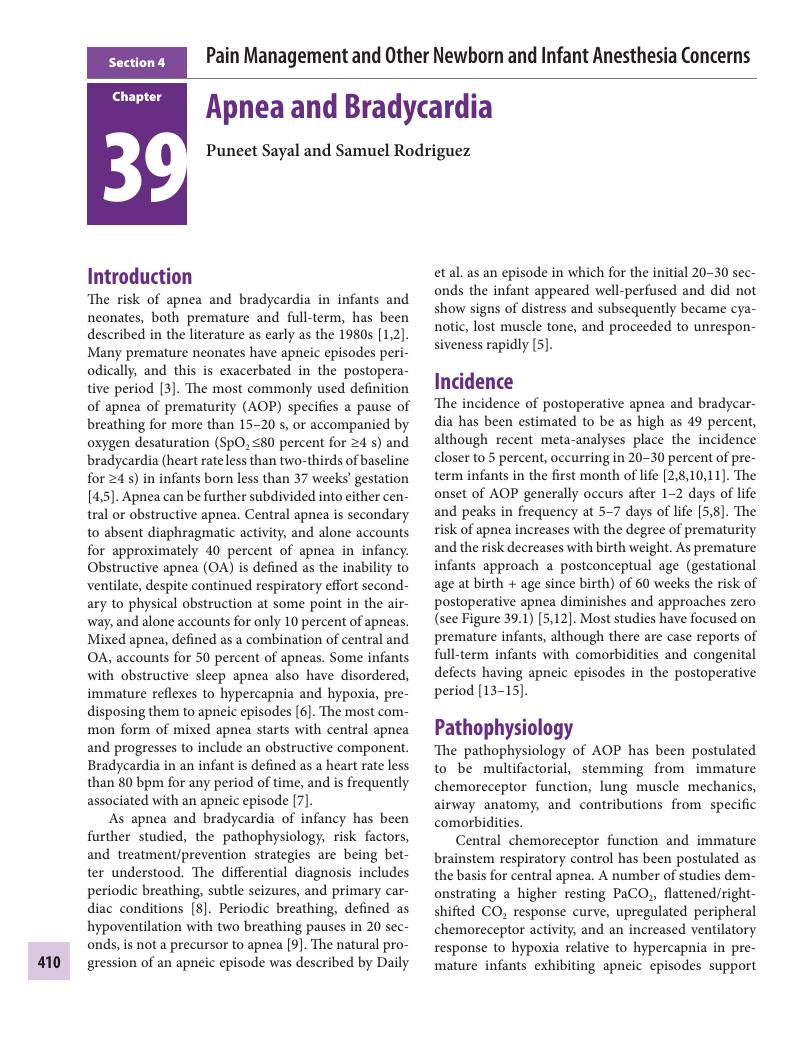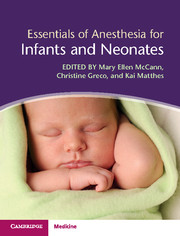Book contents
- Essentials of Anesthesia for Infants and Neonates
- Essentials of Anesthesia for Infants and Neonates
- Copyright page
- Contents
- Contributors
- Preface
- Section 1 Newborn and Infant Physiology for Anesthetic Management
- Section 2 Newborn and Infant Anesthesia
- Section 3 Specific Newborn and Infant Procedures
- Section 4 Pain Management and Other Newborn and Infant Anesthesia Concerns
- 35 Pain Management in Neonates and Infants
- 36 Regional Anesthesia in Neonates and Infants
- 37 Procedural Sedation
- 38 Ambulatory Anesthesia in Infants
- 39 Apnea and Bradycardia
- 40 Neonatal Outcomes
- 41 Research on Newborns and Infants
- Index
- References
39 - Apnea and Bradycardia
from Section 4 - Pain Management and Other Newborn and Infant Anesthesia Concerns
Published online by Cambridge University Press: 09 February 2018
- Essentials of Anesthesia for Infants and Neonates
- Essentials of Anesthesia for Infants and Neonates
- Copyright page
- Contents
- Contributors
- Preface
- Section 1 Newborn and Infant Physiology for Anesthetic Management
- Section 2 Newborn and Infant Anesthesia
- Section 3 Specific Newborn and Infant Procedures
- Section 4 Pain Management and Other Newborn and Infant Anesthesia Concerns
- 35 Pain Management in Neonates and Infants
- 36 Regional Anesthesia in Neonates and Infants
- 37 Procedural Sedation
- 38 Ambulatory Anesthesia in Infants
- 39 Apnea and Bradycardia
- 40 Neonatal Outcomes
- 41 Research on Newborns and Infants
- Index
- References
Summary

- Type
- Chapter
- Information
- Essentials of Anesthesia for Infants and Neonates , pp. 410 - 414Publisher: Cambridge University PressPrint publication year: 2018
References
- 1
- Cited by

